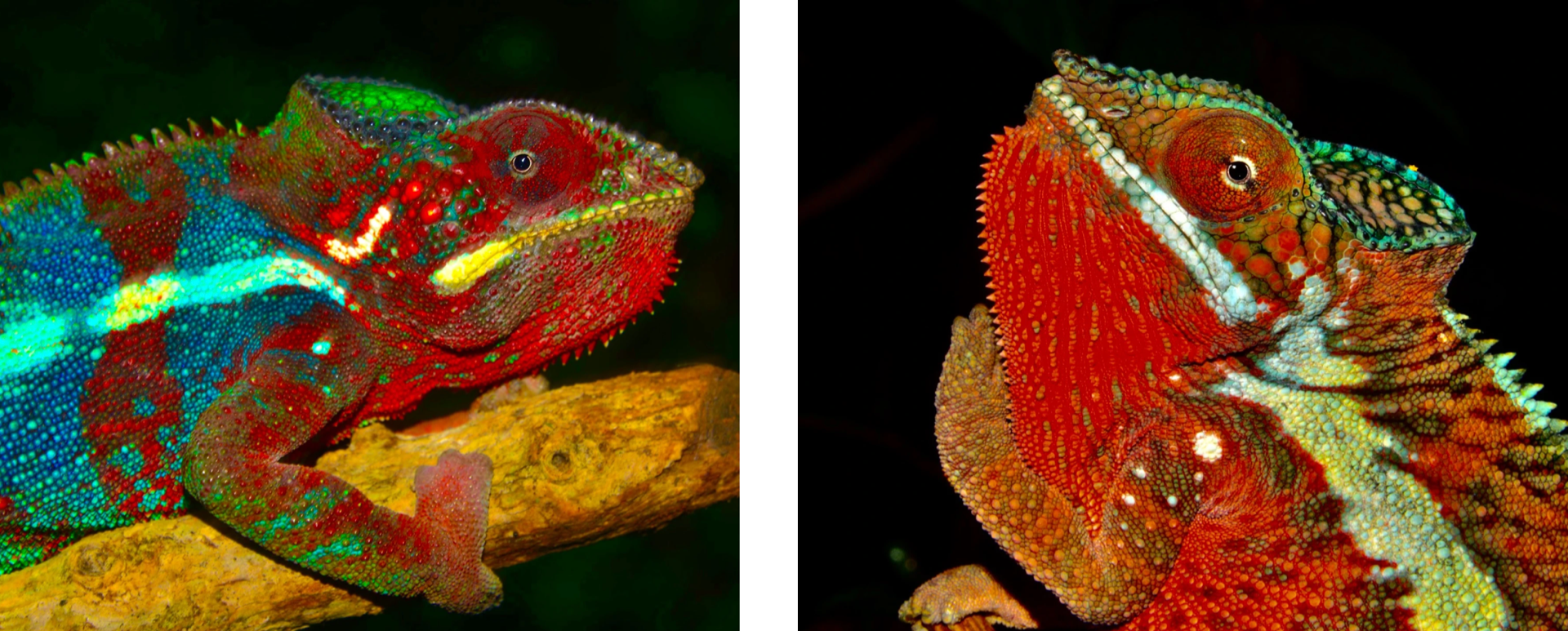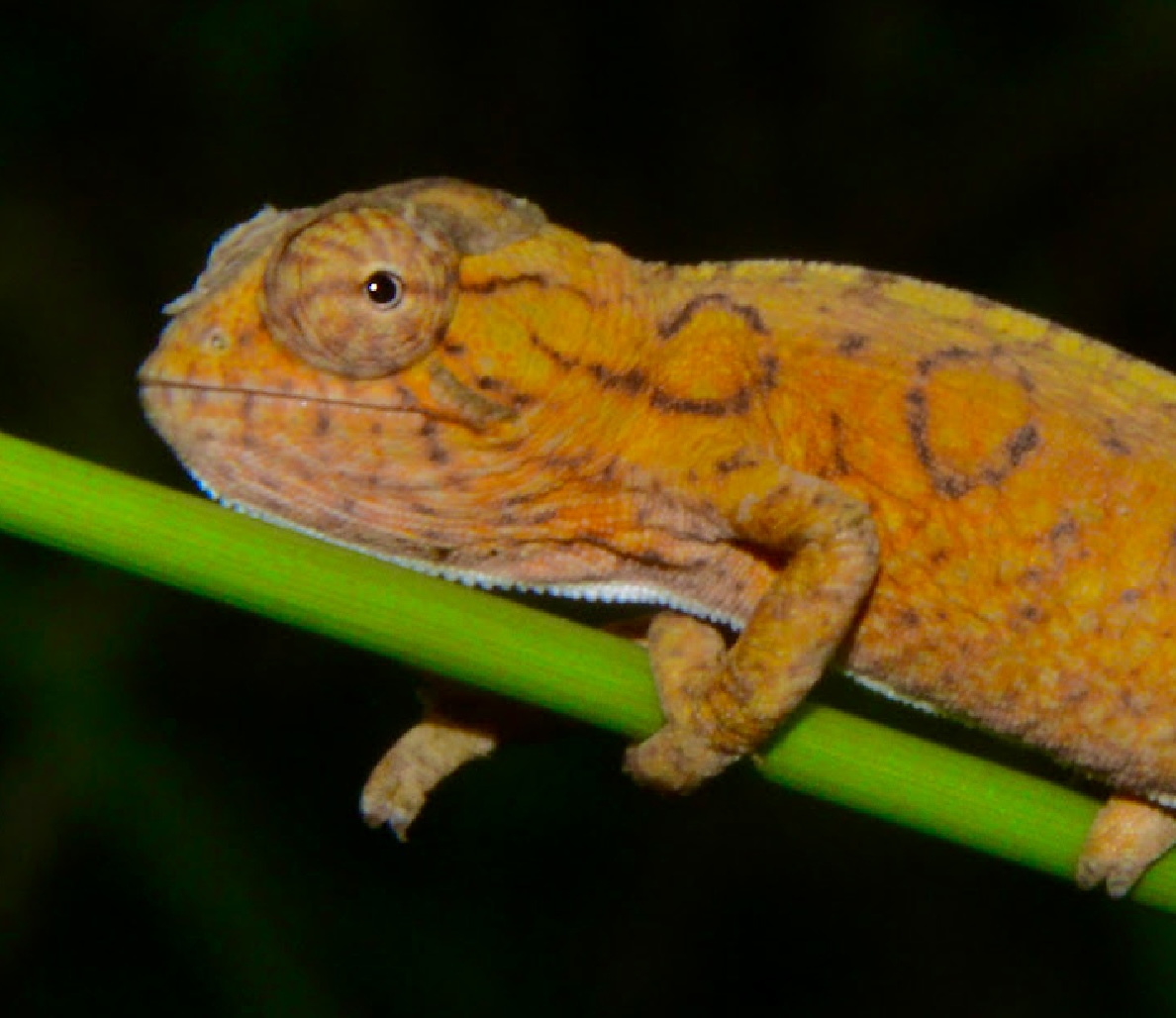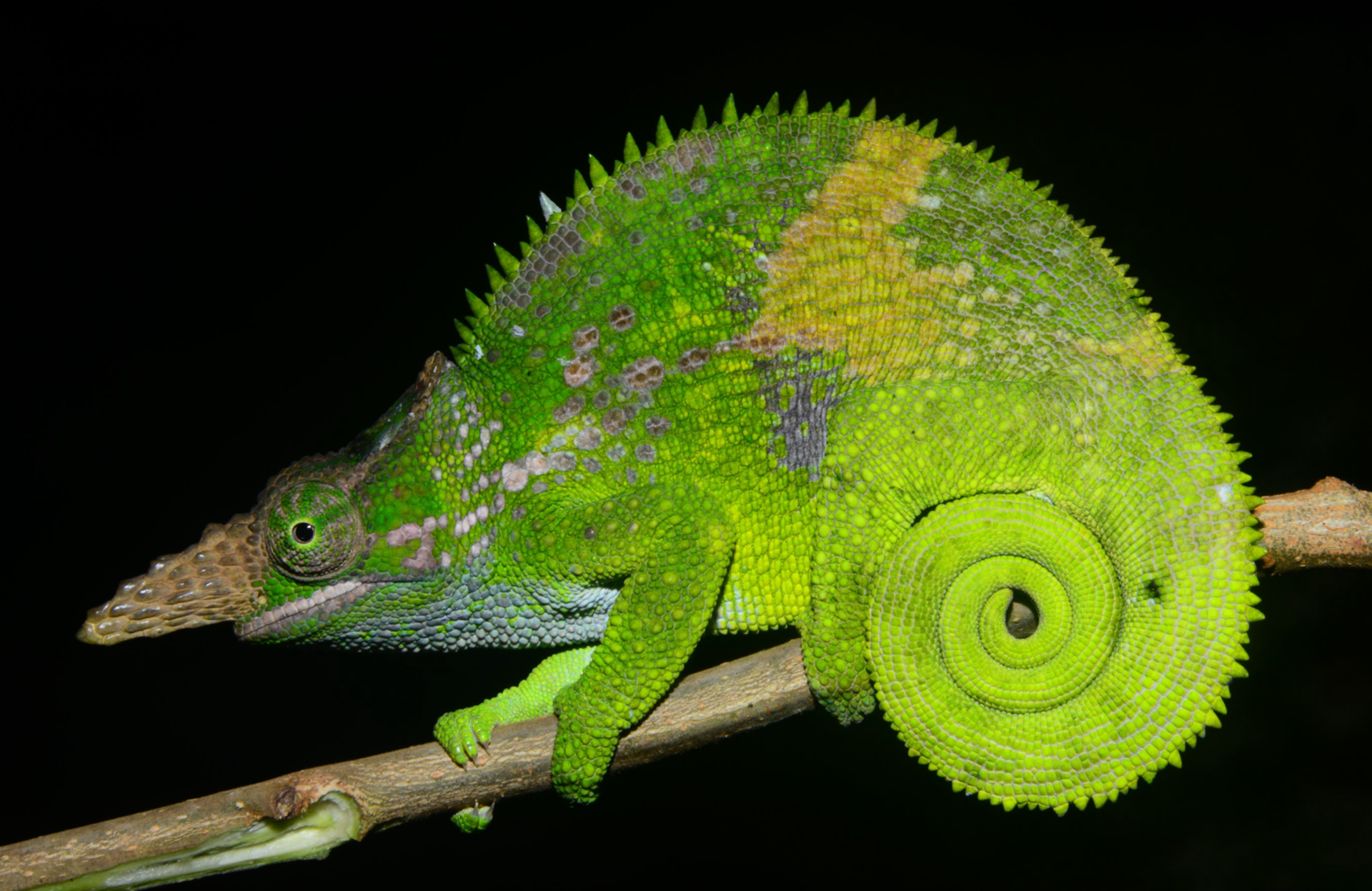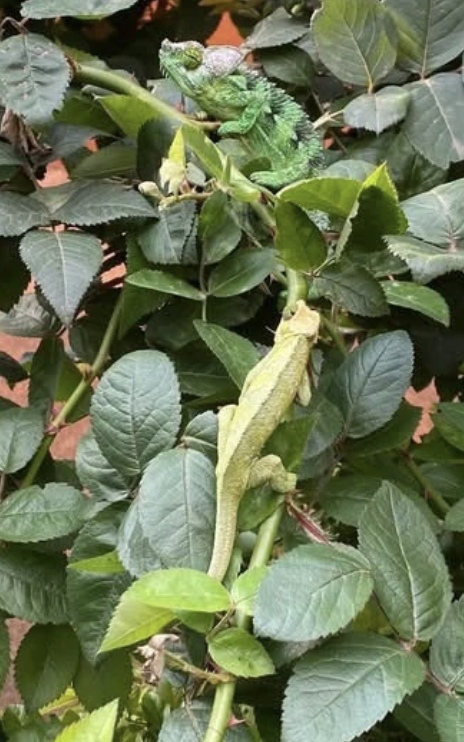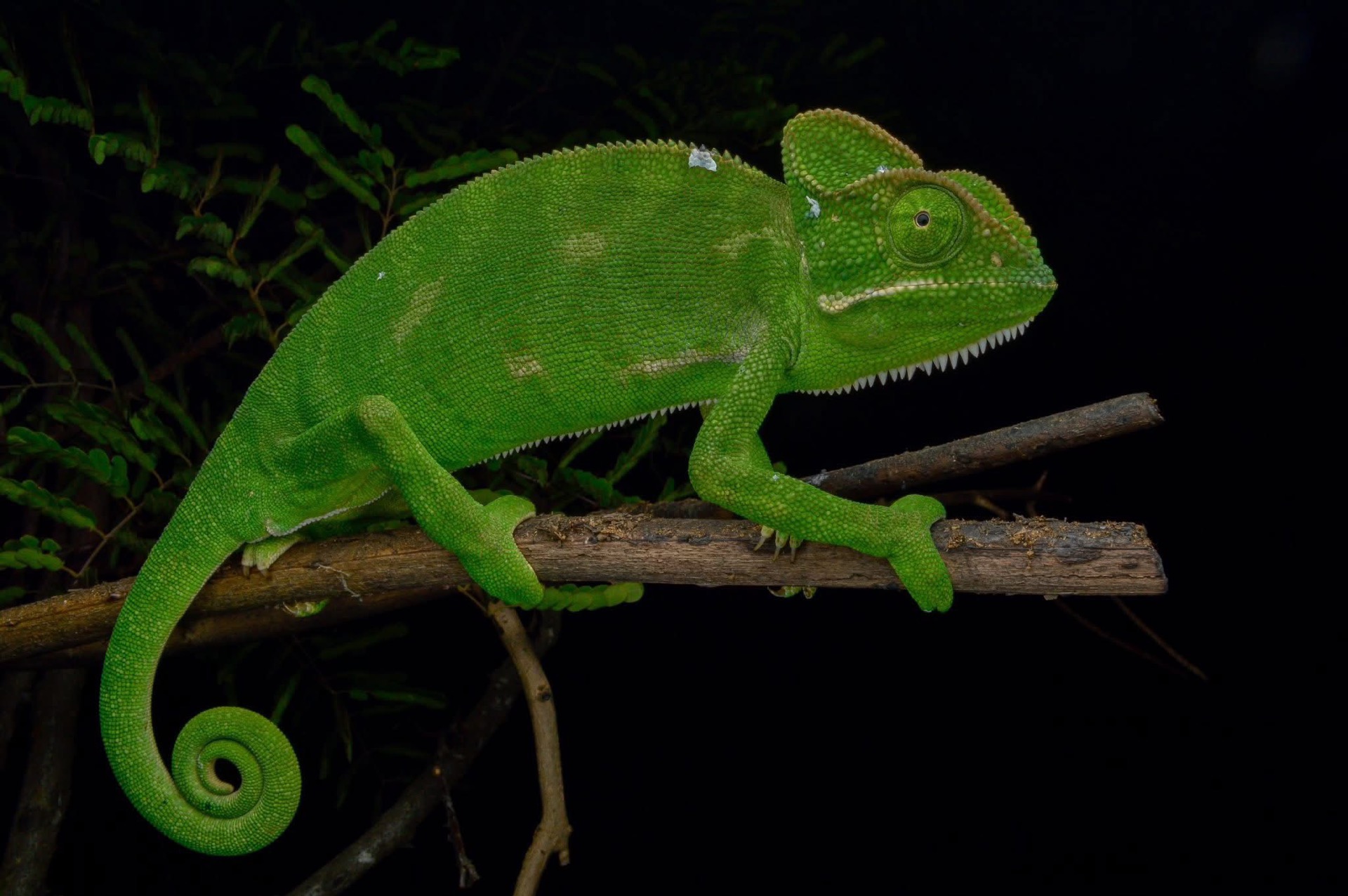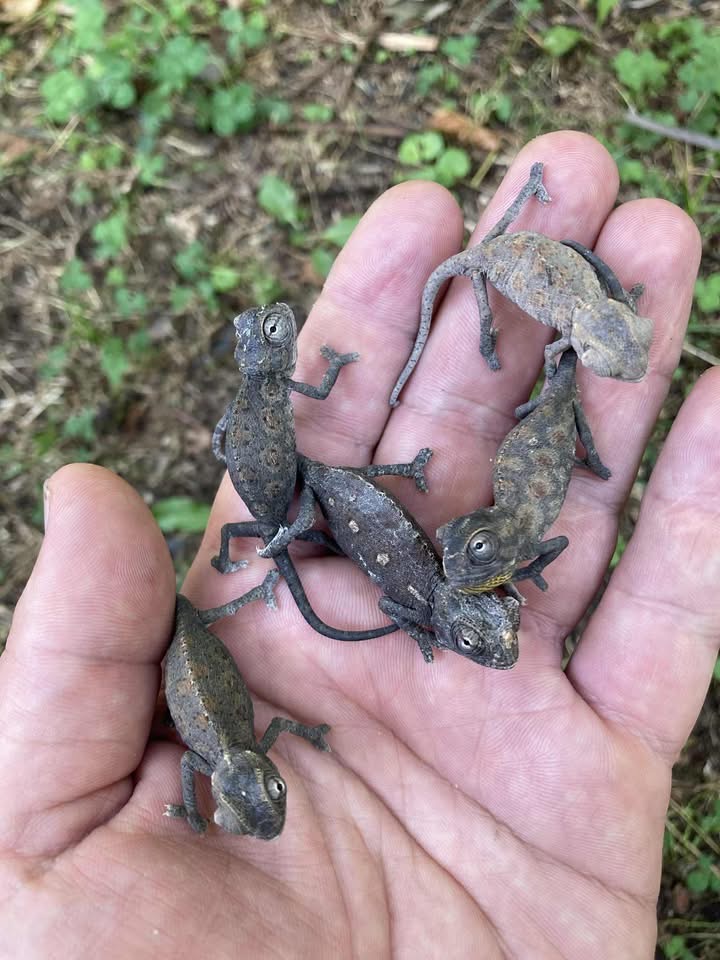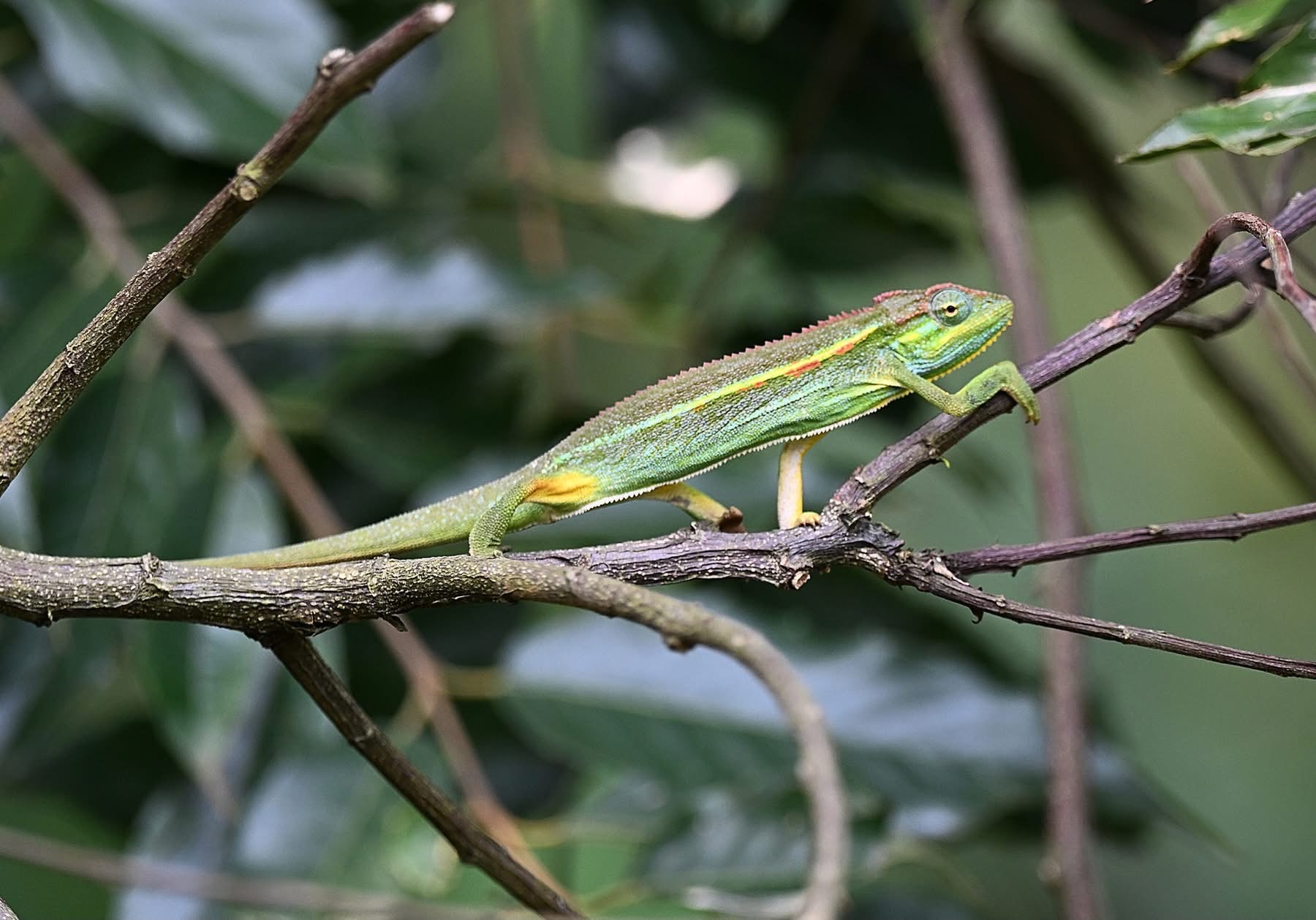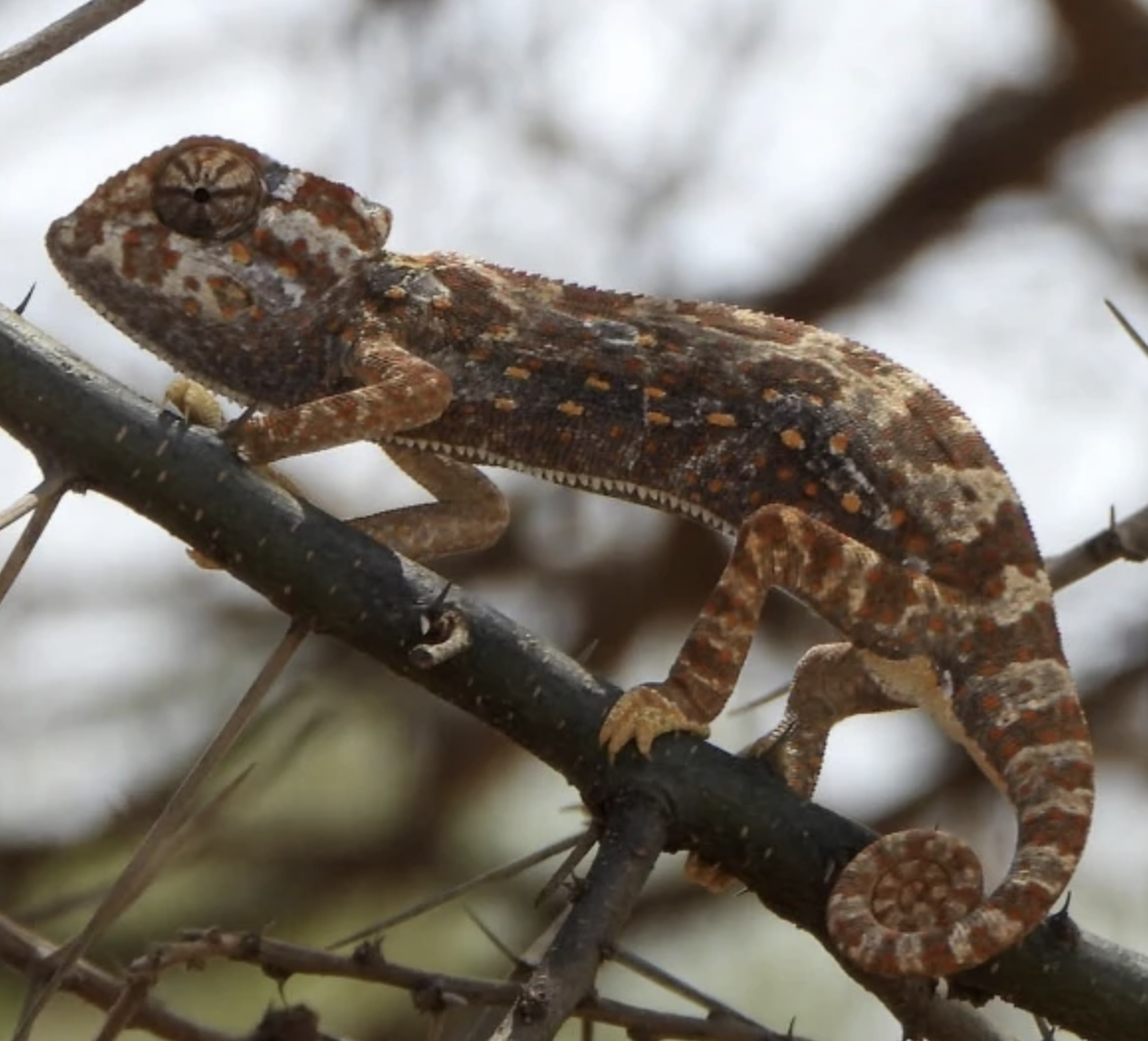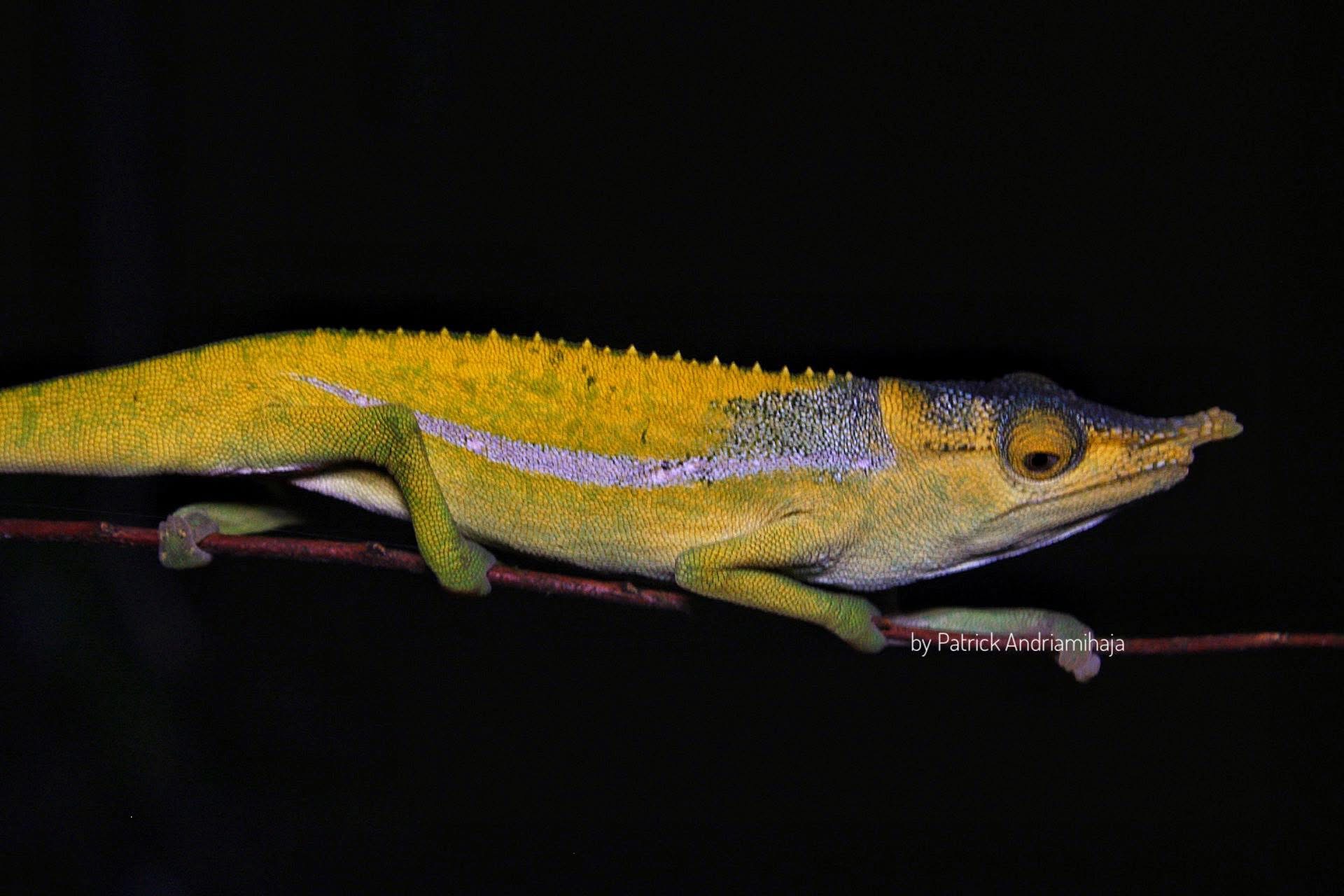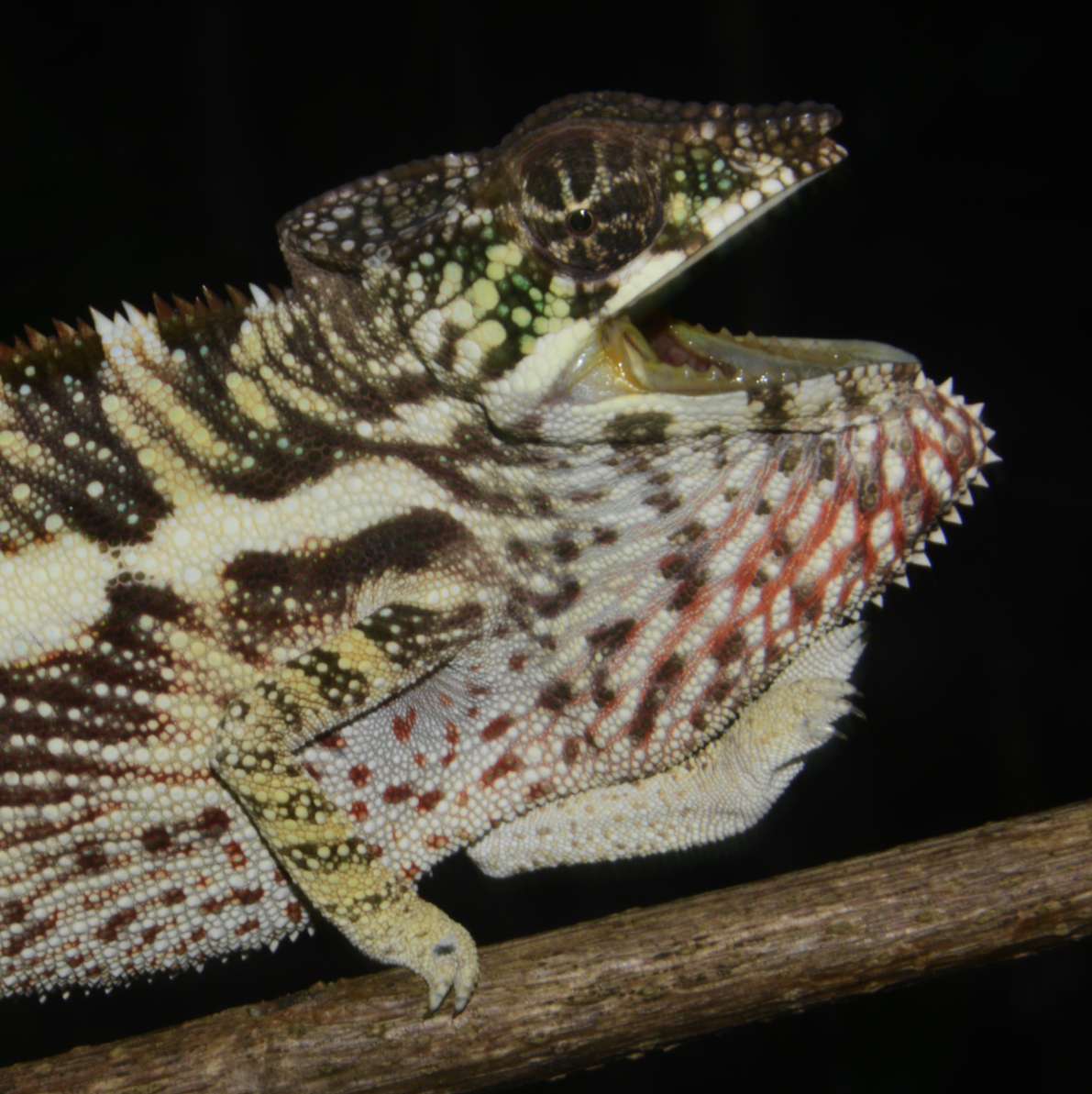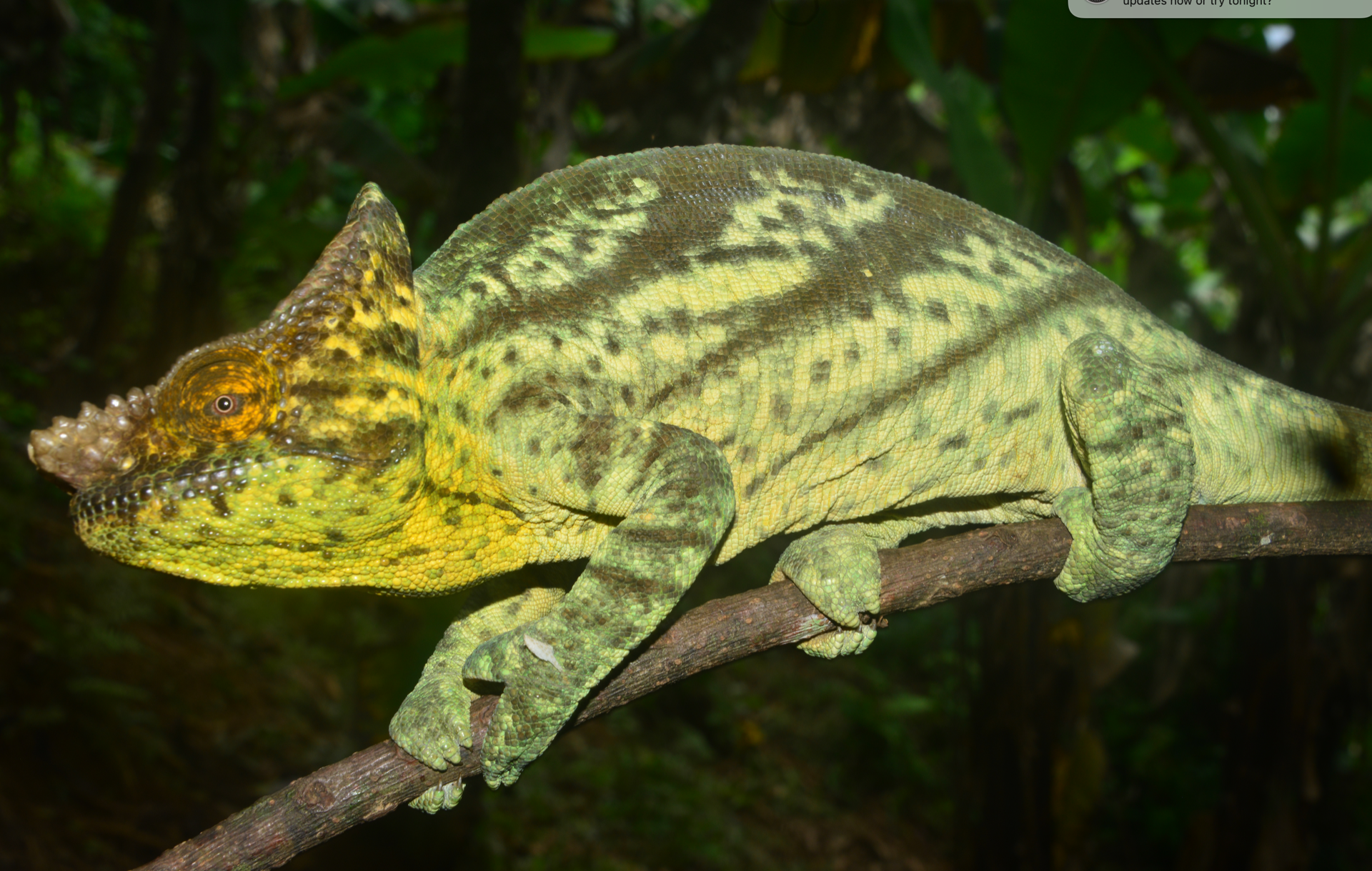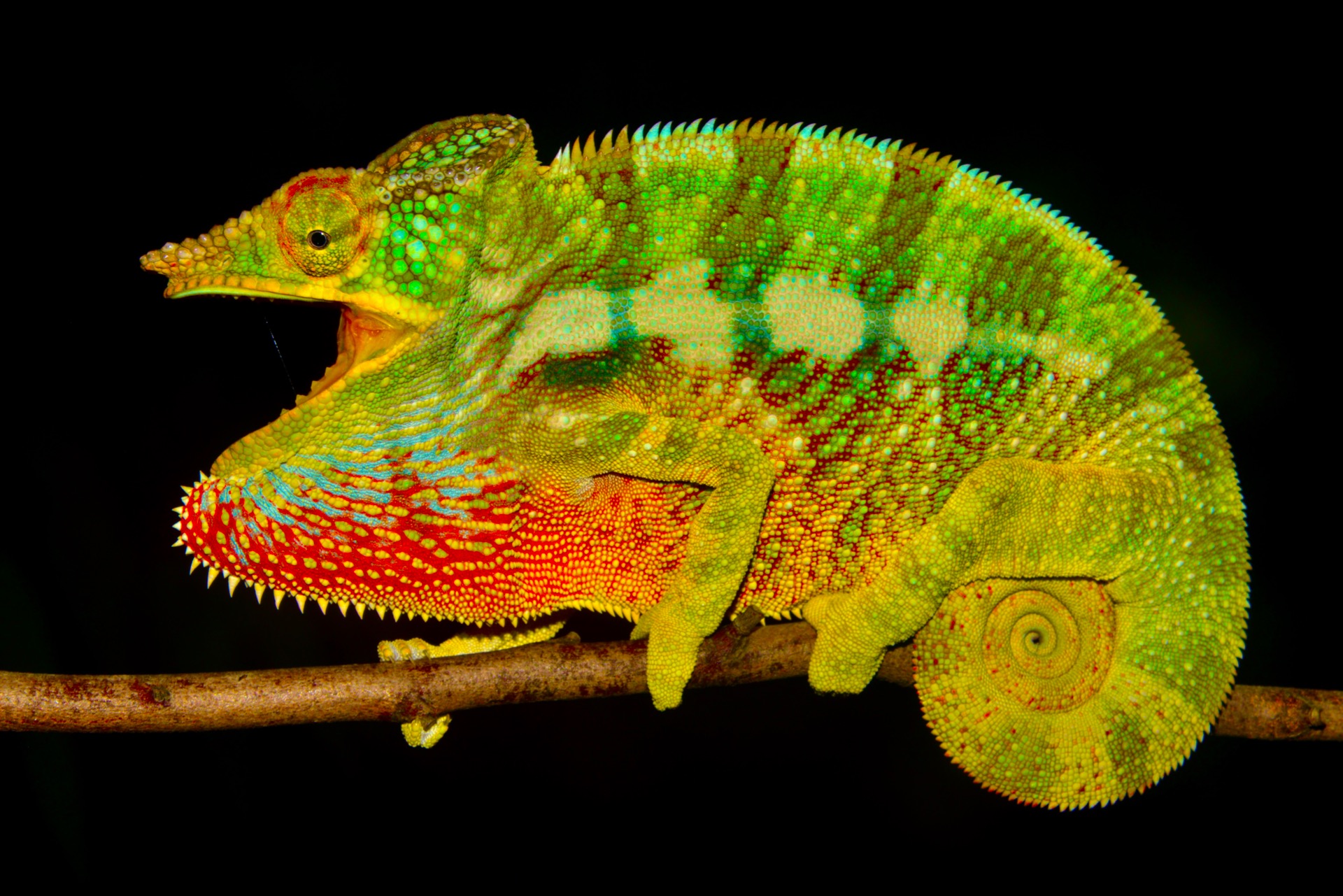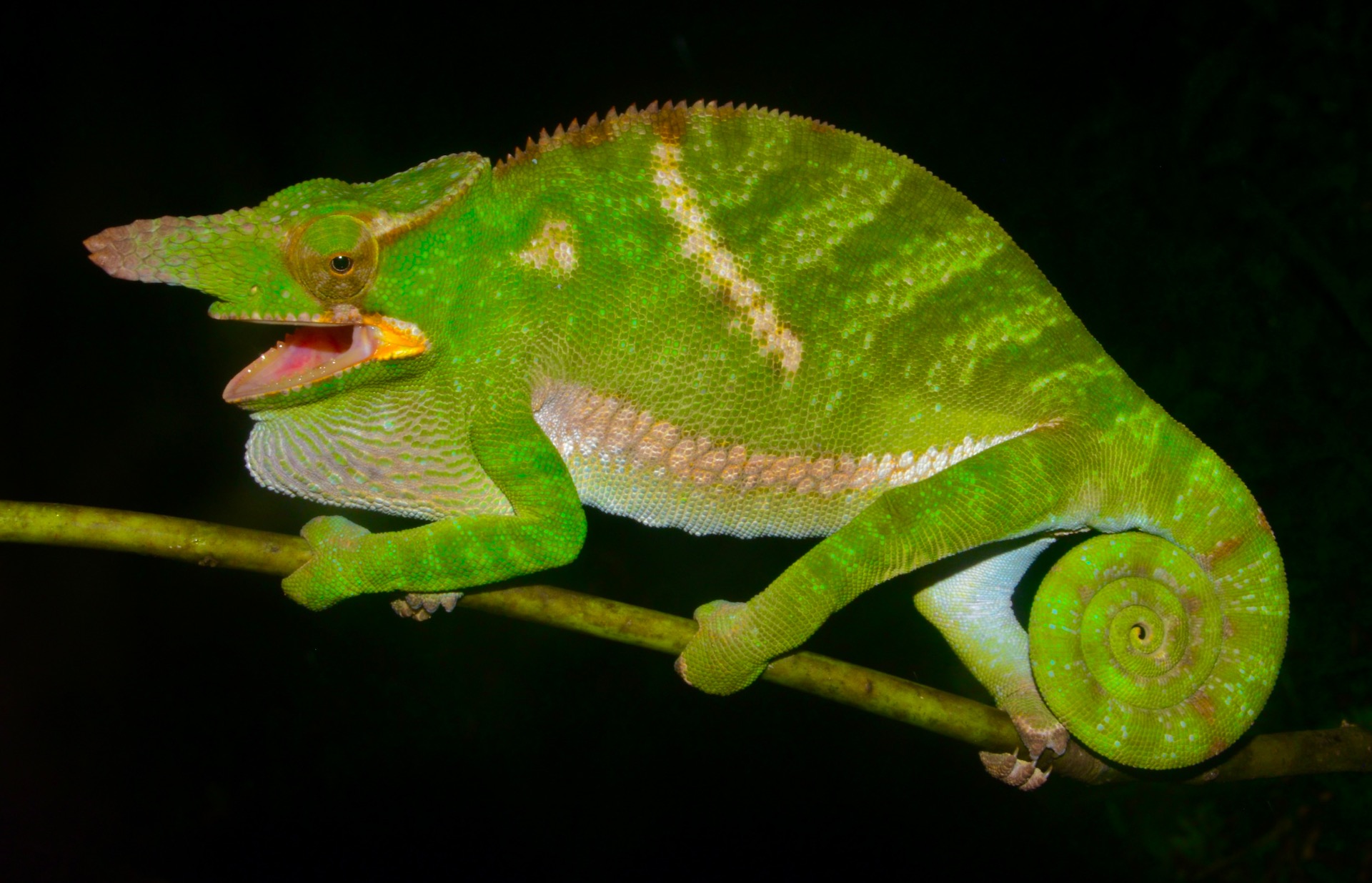Male Furcifer pardalis, or panther chameleons, are visual marvels, flaunting vivid arrays of color: fiery reds, luminous blues, deep greens, and citrus oranges, often in dazzling, territorial displays. These chromatic signatures are not merely ornamental; they function as dynamic signals of genetic identity and mating fitness. Across Madagascar's...
CHAMELEONOLOGY:
Chameleon Natural History...
Above: juveniles of 4-6 weeks of age
Kinyongia multituberculata, described by Tornier in 1899, is an arboreal chameleon species endemic to the montane forests of the West Usambara Mountains in northeastern Tanzania. Distinguished by its multiple dorsal conical tubercles—especially pronounced in males—it represents one of the most morphologically distinctive taxa within the genus. The...
Visual Communication and Social Signaling in Chameleons: A Case Study of Trioceros hoehnelii
Chamaeleo zeylanicus is the only chameleon species native to the Indian subcontinent, with a range spanning peninsular India, Sri Lanka, and southeastern Pakistan. It is oviparous, with clutch sizes ranging from 10–40 eggs, deposited in deep soil burrows (~25 cm) during the dry season. Morphologically, it exhibits a high parietal casque, prominent...
After fabulous reports on the breeding of the Namaqua Desert Chameleon from Belgium (Jürgen van Overbeke) and Austria (Haus der Meeres, Vienna), another successful breeding is reported
Montane Side-Striped Chameleon, Trioceros ellioti, Zziba, Uganda, July 2025
A Slender Chameleon, Chamaeleo gracilis, a wonderful male specimen in a rare color phase
The specific epithet "furcifer" derives from Latin. The root "furca" translates to "fork" and the suffix "-fer" is derived from the Latin verb "ferre," which means "to carry" or "to bear." Therefore, the term "furcifer" can be interpreted as "fork-bearer" and stays as a noun in apposition. It refers to the chameleon's distinctive physical feature:...
Ah, Snake Day! A delightful occasion when many gather to celebrate our slithering friends, those leggy-less wonders of the reptile world. Yes, snakes, the great eaters of mice, the stealthy lurkers in the grass, and the ultimate fashion icons with their snazzy, scaly outfits, deserve a day of admiration. After all, they were crafted with the same...
The Pinocchio Chameleon
Calumma gallus, also known as the lance-nosed chameleon, is a small, elusive species endemic to eastern Madagascar. Males sport a long, flexible rostral appendage with vibrant blue, violet, and green hues, while females have a shorter, leaf-shaped red nose. Measuring around 11 cm, they thrive in dense, fern-covered vegetation on steep slopes. Their...
Chameleons in the Mist
One of the most incredible moments of a chameleon lover is to see the Parsons' Chameleon in the wild...
A Previously Unreported Population of Furcifer pardalis from Ambodiriana, Central East of Madagascar
The panther chameleon is one of the best known chameleon species of Madagascar, famous by remarkable variability of color appearances of adult males. Yet, not all populations are known and documented...
The population of the Oustalet's chameleon (Furcifer oustaleti) between Andasibe and Toamasina in the central east of Madagascar is characterized by its robust appearance and incredible colors.
Incredible Furcifer bifidus
Furcifer bifidus is a chameleon species native to Madagascar, described by Georges Cuvier in 1829 alongside the Parsons' chameleon in the same work. This species is notable for its two large, flattened horns that protrude from its snout, distinguishing it from other chameleons.
Snalt in Chameleons
In the fascinating world of chameleons, the term "snalt" refers specifically to a specialized secretion produced by the nasal salinary glands. These glands play a crucial role in the unique physiology of chameleons, enabling them to thrive in diverse environments. Snalt, often misunderstood, is a vital aspect of chameleon health and hydration.
Habitat and Range: Its range is confined to a few scattered remnants of the original forest, highlighting its vulnerability. These limited habitats make the species heavily reliant on the preservation of its natural environment.
Threats: The Angel's Chameleon faces significant threats from logging and wildfires, which contribute to habitat...
The population of the Oustalet's chameleon (Furcifer oustaleti) around Mahajanga in the extreme west of Madagascar is characterized by its slender appearance and incredible collar. The gular grooves are rusty brown to orange in males, while females exhibit yellow coloration. Additionally, the inner side of the throat is lime yellow in both sexes.
Furcifer angeli, or Angel's chameleon, is a striking yet understated species endemic to the dry deciduous forests of northwestern Madagascar. Named in honor of French herpetologist Fernand Angel, it inhabits fragmented forest remnants from Ankarafantsika to Mahajanga. Males display muted orange and blue-gray hues, while females resemble F. pardalis...
Chameleons and Mosquitos
Mosquitoes are well-known vectors for various diseases in humans and animals, but their interactions with reptiles like chameleons offer a fascinating perspective on the ecological dynamics of parasite transmission. While chameleons primarily inhabit Madagascar and parts of Africa, they can also fall prey to mosquito bites, which can result in the...
Chameleon Zebu Horn Intarse
Chameleons are creatively represented in art through intricate carvings made from zebu horn. These designs, often crafted as reliefs or decorative pieces, capture the unique shapes of chameleons in a strikingly minimalist form. The natural hue of zebu horn contrasts beautifully against white backgrounds, highlighting the skill and artistry...
Chameleon Beton Reliefs
Chameleons appear in simple reliefs scratched into layers of wet concrete before it hardens. Despite their minimalist design, these little guys look surprisingly artistic, adding a splash of whimsy to walls of rooms or exteriors. It's like the local artists thought, "Why use paint when you can just scratch out some chameleons and call it modern...
Chameleons on Tea Cups
Chameleons on tea cups? Only in Madagascar! These little color-changing critters have taken their talents to metal tea pots, showing off their style while steeping your favorite brew. Imagine pouring tea and thinking, "Is that the tea changing color, or the chameleon trying to blend in with the floral design?" Just be careful; they might try to...
Chameleon on a Key Chain
You arrive at a hotel in Madagascar and immediately hold a chameleon in your hand. The receptionist smiles and hands you a room key—complete with a tag featuring a chameleon! "our room comes with a complimentary lizard!" she chirps. Great, now you have a tiny roommate that changes colors faster than you can decide what to wear! Just wait until...
Chameleons on Umbrella Baskets
In Madagascar, chameleons are admired for their colors and forms, inspiring local artisans to feature them in traditional crafts, even on metal umbrella baskets. These decorative items showcase the island's biodiversity and artistic talent while promoting cultural heritage. By depicting chameleons, artisans raise awareness of Madagascar's unique...
Antalaha is a coastal city located in northeastern Madagascar, nestled along the Indian Ocean. It serves as a significant center for vanilla and clove production, surrounded by lush tropical landscapes. The city experiences a humid tropical climate, with warm temperatures and heavy rainfall during the rainy season from November to March. Antalaha's...
Deep in the rainforests of Madagascar lives a legend cloaked in green: Calumma parsonii, the Parsons' chameleon. As the largest of all chameleons, males can exceed 60 cm and possess the raw power to hunt prey few reptiles their size would attempt.
Chameleon babies are tiny
Chameleon hatchlings are astonishingly small, emerging from eggs barely the size of a coffee bean. Among them, Furcifer lateralis, the carpet chameleon, is particularly petite at birth, typically measuring just 3 centimeters in total length, including the tail. Weighing less than a gram, they resemble living threads of color, often translucent and...
Furcifer petteri, an Exceptional Beauty
The depicted female of Calumma petteri is simply exceptionally fabulous, exhibiting flawless symmetry, vibrant coloration, and a textbook example of phenotypic elegance among Malagasy chameleons.
